How to Paint a Crib and Make It Safe for Baby
Can you guys hear it? Taps, slowly playing in the background. I miiiight have the distinct impression that I am walking into a firing squad, but today I want to talk safety. I've done a lot of research when it comes to finding the right paint to use in a baby's room, the safest way to paint a crib, etc. While there is a plethora of information online, most of what I've found very fear based, opinion based, and non-specific (you know other than the fact that you're probably going to end up permanently damaging your newborn baby because you wanted a pink crib.)
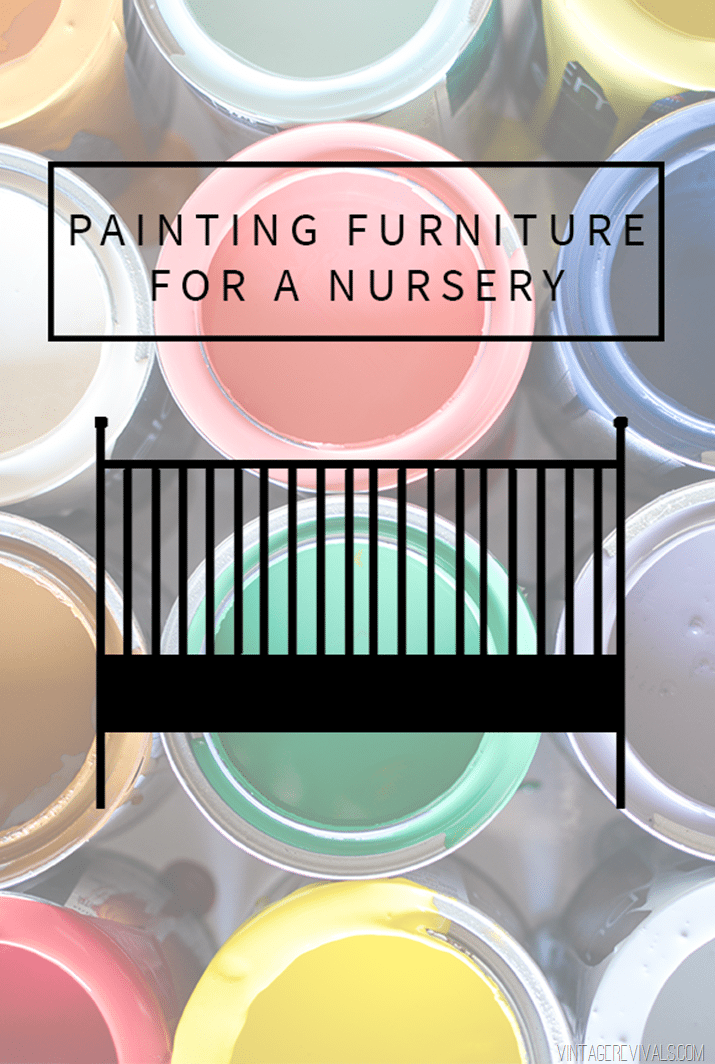
This post is completely my own opinions (feel free to chime in below with yours!) and for most of you, I'm a stranger on the internet so take it for what it's worth. After years of die-hard use, I am a huge fan of Sherwin-Williams paints (you'll see why below) so most of my research was specifically based around their lines. Other than being my preferred line, this post is not affiliated with them in any way.
We haven't had a baby in our house for years. Dylan, our youngest will be 7 in Jan. My house in its current state is not child-proof in any way, shape, or form. It doesn't need to be. My girls don't touch stuff. I can set a pretty little vignette up on the coffee table and it will remain untouched until I mess with it. I didn't realize how not normal this was until I had a group of 10 year old girls over for a church activity. They touched everything! My eyes were opened to what an anomaly my girls are. Its completely fine to have a giant cactus in our living room. No one even notices it.
Getting ready for the baby, and specifically getting the nursery ready has been um….touchy?
There are SO many opinions and information on the internet its easy to feel like unless you use paint that is 3 parts unicorn tears, 2 parts mud from a volcano in middle earth, and tinted with actual rainbows (because honestly, that it the only truly organic and pure source of color) then you are literally the worst parent to have ever walked the earth and your kid is going to suffer tremendously because you cant spend $600 on a gallon of Unicorn-Middle Earth-Rainbow paint.
Clearly that was a little dramatic, but anyone who has ever researched the right kind of paint for a baby crib knows its not that far off.
The most important thing that I found (that seems like the understatement of the century) is to do your research, and decide what is best and what makes the most sense FOR YOU.
The first logical thought that comes to my mind is, am I going to hermetically seal my child in their room?
No. No I'm not.
Should you be more cautious? Sure. But if you're using Unicorn-Middle Earth-Rainbow paint in their room, and then they happen to, I don't know, live in the rest of your house, doesn't that sort of cancel it out? What if they fancy chewing on your coffee table, instead of the side of the crib? Shouldn't you use Unicorn-Middle Earth-Rainbow paint everywhere just in case?
So I know what your thinking. "Great. So now not only do we have to get the crib ready, we have to change all of the finishes in our entire house?!?! SON OF A *#$(&#! MANDI!"
Actually you don't.
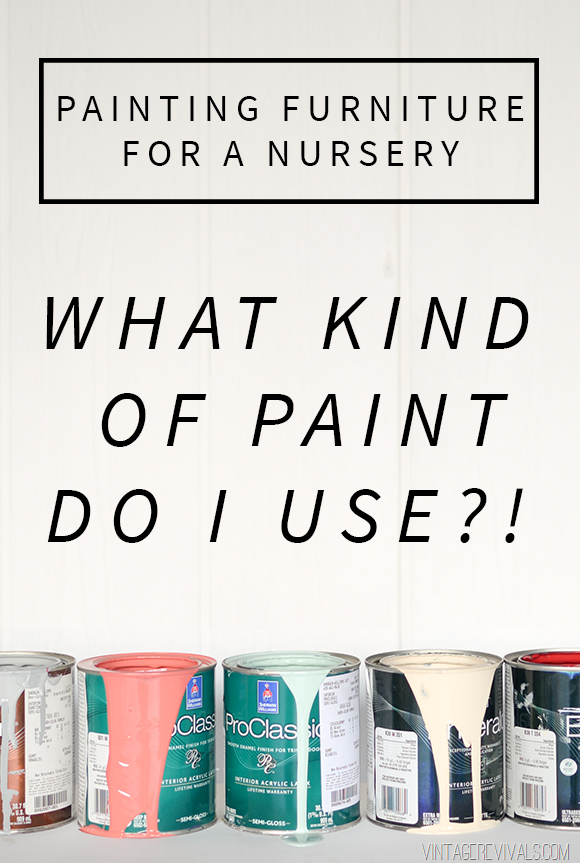
*Keep in mind that I'm talking about a new-ish piece of furniture. If you have a vintage crib that has possible lead based paint or has been painted so many times that you don't know what's lurking underneath, you're on your own.
Painting a crib is one of the easiest updates that anyone can make when they are working on a nursery. But seriously, Google it and I swear on everything that I own, you will be completely terrified and second guessing why you even want to have a cute nursery in the first place. You horrible person you, a cute colored crib is so trivial when you are suffocating your child with a cloud of chemicals.
Ok now.
Lets just stop for a second.
When you buy a crib from IKEA, it is MDF painted with some sort of lacquer. Right? How about if you buy one from Target? Even a super high end baby boutique? Its most likely painted with lacquer. So I would like to pose the question. How is painting over it with more lacquer or paint that is designed for highly durable every day furniture use any more dangerous?
As long as it has the proper amount of cure time, its not.
IKEA isn't using Unicorn-Middle Earth-Rainbow paint. They are giving the piece proper cure time and that makes it safe.
When it comes to crib painting, the buzz word that everyone is using is Non-Toxic. The problem is that no one actually defines what that means, or what paint is in that category. When I hear that term I immediately react with "of course I want non-toxic! I don't want to subject my sweet innocent baby to a toxic environment!!" Duh. But what kind of paint is non toxic? Is it only the expensive hippy paint?
Specifically the term Non-Toxic encompasses 2 things. Not adding Silica, and being Lead-Free. Most water-based paints on the market, and all of Sherwin's are Non-Toxic. Even oil-based products are making huge strides towards being non-toxic by using plant based oils vs. fossil fuels. So I guess according to the people on the internet, you can use a paint from any of their lines to paint a crib and its fine.
Why does no one say that? Why does it feel like you can only use some crazy obscure product?
So now that we've established that we can use pretty much any water-based paint on the market, I'm going to take toxicity a step further and delve into VOC's.
Almost anything that is manufactured, from paint to plywood, blankets to carpet, contain VOC's. VOC stands for Volatile Organic Compound. It is at its most basic form, chemicals that a product off-gasses into the environment. Specifically related to paint, VOC ratings are different based on the intended use of the products (floor coating vs. wall paint vs. furniture paint). If you look at the strictest regulations it needs to come in at under 50 grams per liter (for comparison, 10 years ago most water-based paint came it at around 200 grams per liter). Less than 50 is considered Low VOC, which is fantastic. No VOC paints have zero VOC's per liter.
The most concentrated amount of VOC's are released when you are working with the product. I.E. when your paint is still wet. As the product cures, the VOC's evaporate into the atmosphere. Once cured (and after your house has been aired out) the amount of VOC emission is so greatly reduced that its not even measured (there is very little research on continued emissions). The huge push for Low and No VOC paint has been not so much for the safety of the product for humans (though that is an added bonus), but because of the environmental gases that it creates in the atmosphere once it's escaped your home.
When I stopped to think about it, while lines like Sherwin's Emerald, or Harmony are No VOC, I realized that I would much rather have paint that is formulated specifically for furniture that is Low VOC. Emerald and Harmony are specifically designed to be used on walls, so they aren't as hard and durable as a line like ProClassic that is designed to be used on high traffic areas like furniture and doors. (You can see the technique that I use to get a perfect finish with Pro-Classic here!)
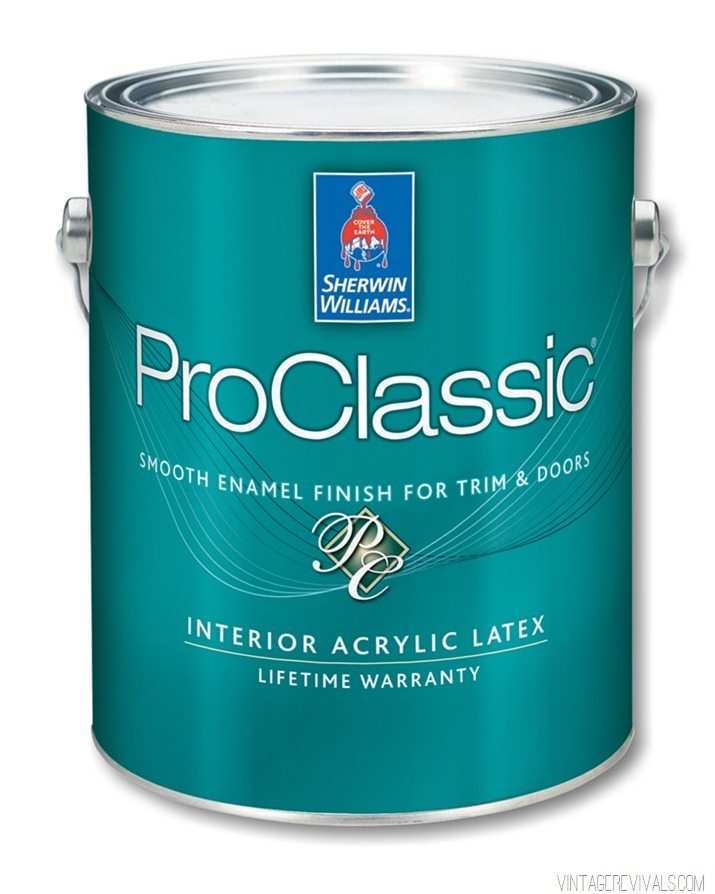
IMHO the right formulation is more important than a little VOC off-gassing while its curing. Pro-Classic comes in at 37 grams of VOC per liter, well below the threshold. So not only is it Non-Toxic, but its Low VOC. Not to mention practically magic its so amazing. (Honestly if there was ever a line made with unicorn tears this would have to be it.) It takes about 24 hours of cure time (and about a month for it to reach its max durability, though you can start using it after 48 hours).
Teething babies gnaw on things. I'd much rather have my kid gnaw on something that had a strong and durable finish, wouldn't you? As opposed to something that was less strong and had to be touched up more often?
Lets talk about painting the walls.
One of the reasons that I LOVE Sherwin-Williams Emerald Paint and have used it everywhere in my house is because its No VOC and it is significantly more durable and cleanable than most paints with all of that stuff. That is why its so special.
As I was researching though, I "found" a new line that I ended up using instead of my beloved Emerald. Its called Harmony. I've seen it in the store before, but never really asked about it. Harmony is PERFECT for a baby's room (and I mean, realistically for everywhere in your house) not only is it No VOC (so its not off-putting any chemicals) but it has proprietary technology in it that actually reduces and eliminates odors and VOC's that other things in the room off-put (like carpet, hardwood, glue, fabric etc.) Crazy right?! The coverage was wonderful too. Its a win-win.
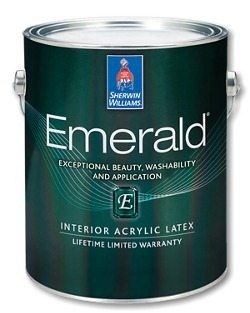
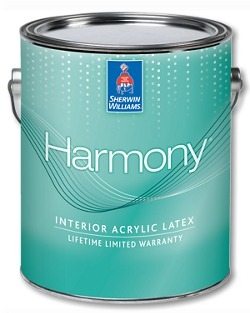
Most VOC's are odorless, but its pretty safe to say that while the odor causing ingredients of paint are still emitting, so are the VOC's.
We all need to ABSOLUTELY be conscious consumers of what we are buying, and what we are bringing into our home. Is it worth paying a little bit more for No VOC paint, or Formaldehyde free plywood? Of course. But its something that we need to be conscientious of in our entire house, not just one room.
I am VERY interested in hearing your opinion about all of this. Do you have info to chime in with?
**Make sure you come back tomorrow to see the reveal of the nursery!!

How to Paint a Crib and Make It Safe for Baby
Source: https://vintagerevivals.com/painting-furniture-for-a-baby-nursery-is-it-safe-to-paint-a-crib/
0 Response to "How to Paint a Crib and Make It Safe for Baby"
Post a Comment